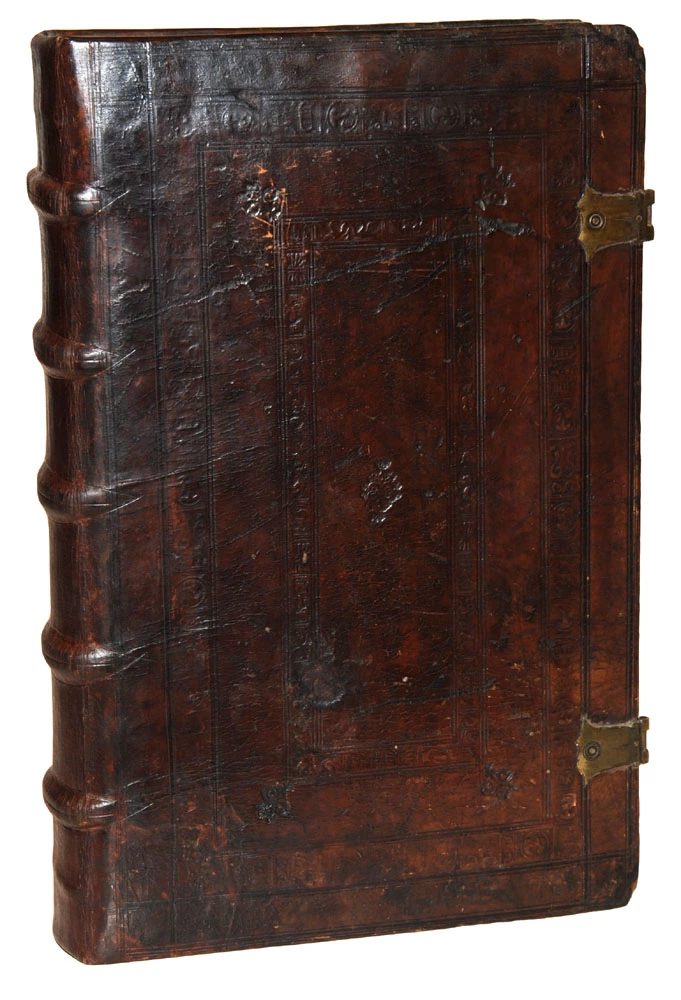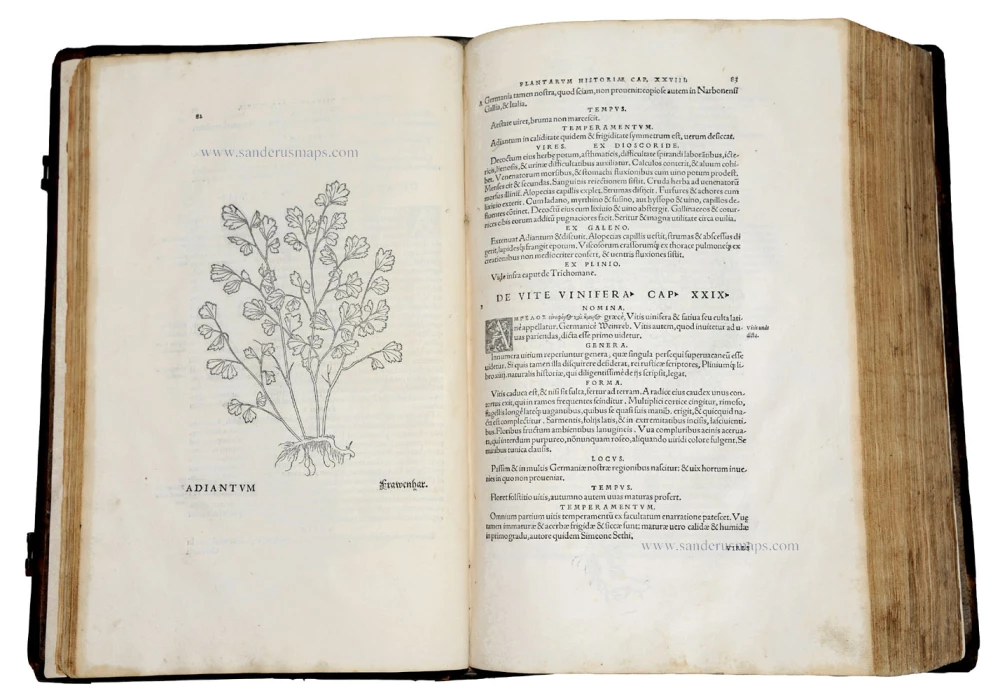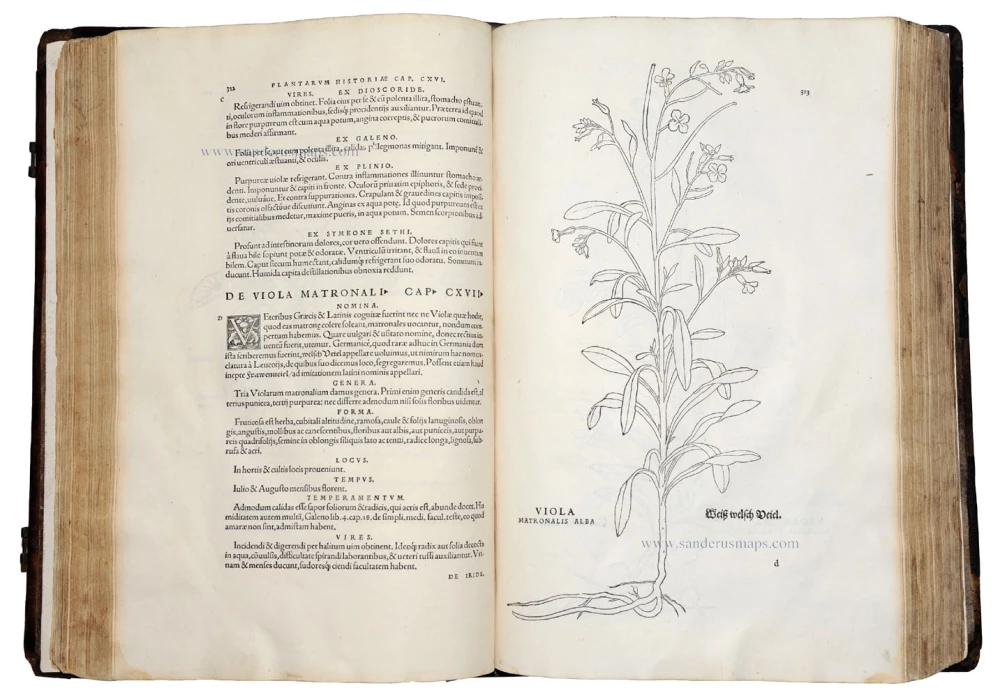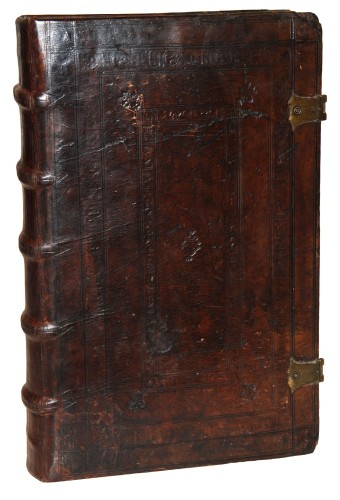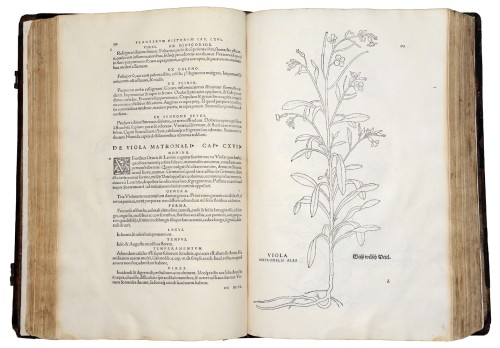Rare antique botanical book by L. Fuchs, 1542.
De Historia Stirpium Commentarii Insignes.
Item Number: 21439 Authenticity Guarantee
Nissen (BBI), 658; Adams H.M. F-1099; Hunt (Botanical Books), 48; Pritzel, 3138; STC German, p.326
Fuchs's book is of great splendour, without equal among sixteenth-century herbals. All the 512 woodcut figures are original and depicted from life. These figures established a standard of botanical illustration that has lasted to the present day, and more than 100 species were illustrated for the first time (including 12 New World plants such as maiz, kidney bean, chilli pepper, cactus, and tobacco). During Fuchs' lifetime, the herbal and its various abridgements went trough 39 printings in Latin, German, French, Spanish, and Dutch.
Hunt: "This book is important in the history of botanical illustration particularly because of the size and beauty of the woodcuts; full recognition was given to the three men who created them, Füllmaurer, Meyer, and Speckle, their portraits appearing at the end of the book.
Fuchs, following Brunfels, was the third of the German Fathers of Botany. He gave us forty plants never before figured, and initiated the history of some American plants, among which was maize, though Fuchs thought that it came from Turkey. He was also the first of the modern era to attempt to give a botanical glossary of terms, presenting it in an alphabetical order. ..."
"After nearly five hundred years, Fuch's great herbal remains one of the most beautiful scientific books ever published. Its appeal to gardeners, botanists, bibliophiles, and the casual viewer is immediate, while the clarity of its plant pictures continues to define a standard for botanical illustrators." (Rare Book Room)
"A landmark in the development of natural history because of its organized presentation, the accuracy of its drawings and descriptions of plants, and its glossary." (Encyclopaedia Britannica)
Printing and the Mind of Man, 69.

